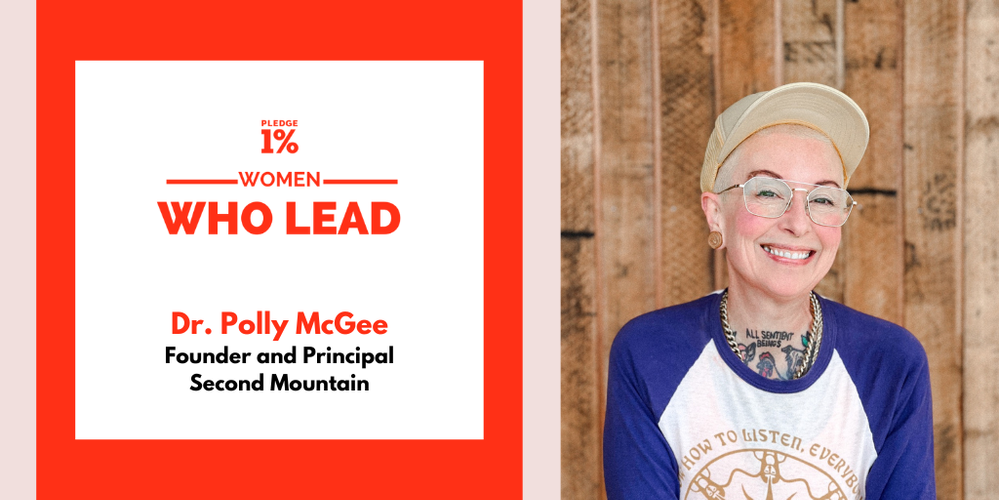
Dr Polly McGee
Founder and Principal, Second Mountain
All over Tasmania
If you could describe yourself in one word, what would that be and why?
All-purpose. Ok – its hyphenated and I am cheating as I describe myself as an all-purpose human being, which is a cheeky multi-dimensional concept. So often we credential to show our identity, expertise and capacity rather than showing our humanity.
I am strongly driven by purpose, as well as being an avid bread baker, so being an all-purpose human being can be broken down into someone who is being not doing, who is agile and adaptive, who is all purpose, and who is a common flour with great baking outcomes.
Pledge 1% provides a framework for businesses to do good. Do you think it’s important for today’s corporate leaders to prioritize social impact? If so, why?
Absolutely. I have been part of Pledge 1% since the beginning as giving is one of the surest ways I know to feel connection and meaning. The act of giving is so powerful, and it is never a one way exchange, despite how transactional we are shaped to be in our working lives. There is material benefit to giving, but an equal or greater amount of intangible benefit in creating a culture that is steeped in caring, in sharing resources, in kindness and reciprocity.
This sends a powerful message about the priorities and values of a company which benefits the brand, its retention and the psychological safety and courage of its people.
Do you give back to the community with your team and work? If so, what does this look like?
100% hard yes. I do as much pro-bono work as I can. I prioritize working with leaders and organizations that have a large impact on their communities or sectors as this rippling of capacity then has significant multipliers that continue their reach far beyond me.
I largely donate my time for free, but I do also give actual cash where needed. My prop bono projects include leadership programs where I donate all my time per cohort, keynotes and workshops. I also have a little side hustle called Compassionate Grounds that sells coffee parachutes that are delicious and also 100% biodegradable packaging. The profits from this funds free trauma therapy for people who need clinical sessions with me but can’t afford it.
What’s the best piece of advice you’ve ever received?
Be a student first and a master second, the teachers job is not to lead you to them, but to lead you to yourself.
This year’s International Women’s Day themes are focused on investing in women and inspiring inclusion. What can we do to make today’s workplaces more equitable and inclusive for women?
As a non-binary identifying person, inclusion is a daily lived experience for me, and I know how important it is for safety and belonging.
The people who hold the power need to move beyond simply knowing about inclusion, to really seeking to understand what it is to have to fight for a voice and identity in the smallest ways every day. Put in gender neutral toilets. Be a fierce ally and advocate to your people, understand that sometimes you really have to disrupt to change complacency and habit in cultures.
Get uncomfortable and ask all the questions then make the changes that are suggested, see if there is movement in your inclusion metrics, and keep evolving and innovating. The more diversity, the higher the innovation: when people are not locked in daily survival they are much more creative.
What advice do you have for women who are just starting their career?
Resist the temptation to adapt strategies of compliance and misalignment with your values and authenticity to get ahead. Understand what your optimum life including work feels (not thinks) life and pursue that with purpose and determination.
Be open to the unknown and the unplanned, as long as you are authentic, compassionate and curious to the world, your path will find you.
What are you looking forward to this year? Are there any goals (personal or professional), activities, or experiences you are excited about?
I’m looking forward to challenging and disrupting myself, sitting deeper in discomfort to grow my inner life so I can keep pushing to the edge of how we see leaders and leadership, continuing to integrate self and neurobiology. I am looking forward to student my pizza dough projects to the next level, making lots of time to not work hard and not falling of my new motorbike.
“Be a student first and a master second, the teachers job is not to lead you to them, but to lead you to yourself.”
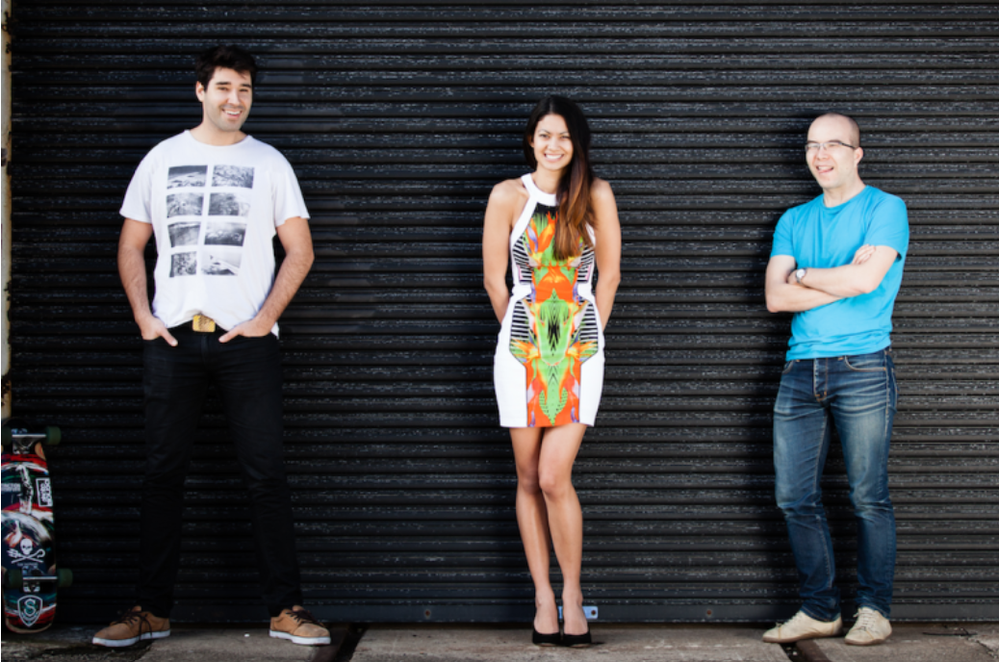
Original article here
Author: Simon Thomsen
The three billionaire cofounders of Canva donated $39 million to the foundation in their company’s name over 18 months, with most of that money already given away.
Husband and wife Melanie Perkins and Cliff Obrecht, set up the Canva Foundation with cofounder Cameron Adams in May 2020.
A month later, the privately-owned design giant Canva doubled in value to $8.7 billion following an $87 million raise. The company is now worth $39 billion and Perkins and Obrecht are among Australia’s top 10 richest people with an estimated $11 billion to their joint names thanks to their 30% stake in the business. Adams has an estimated worth of $3.3 billion.
The duo pledged to give 80% of their fortune away to the Canva Foundation for charitable causes in 2021 and have been busy living up to their word.
Filings lodged with the government regulator, the Australian Charities and Not-for-profits Commission (ACNC), this week revealed the trio poured $38.896 million in cash into the Canva Foundation between July 2022 and December 2023, topped up $607,416 in donations in kind.
That figure’s a substantial jump on $14.894 million donated in the 2022 financial year (the Foundation has moved to calendar year reporting with its latest filing).
What’s even more remarkable about that is that while Australia has around 150 billionaires, including the Atlassian and Afterpay cofounders, but Obrecht, 38, Perkins, 37, and Adams, 44, are the nation’s second most generous philanthropists behind Andrew Forrest and his former wife, Nicole, who gave away $224.9 million of their fortune via their own charitable fund, Minderoo.
Melbourne packaging billionaire Anthony Pratt and his family, were just behind the Canva trio in their generosity.
Canva is already an ardent supporter of 1% pledge, the corporate philanthropic movement, co-founded by Atlassian, which encourages and empowers companies of all sizes and stages to donate 1% of their staff time, product, profit, and/or equity to any charity of their choosing.
The Canva Foundation certainly provides bang for its bucks, costing $641,677 to run over the 18 months and giving away $31.639 million over that time.
The vast bulk of that funding, $31.266 went offshore, alongside grants and donations worth $372,478 made in Australia.
We continue to scale our support for local communities in the form of local projects and volunteering,” the Canva Foundation report says.
“During this reporting period, the Canva Foundation provided more than $164,000 to nonprofit partners to support their local goals and amplify their impact. As part of our local efforts, this year also marked the launch of a pilot Community Project in the form of a $110,000 donation to Orange Sky Laundry to create a safe, personalised, and welcoming environment for those experiencing homelessness across Sydney, Australia.”
Perkins laid out their philanthropic ambitions clearly three years ago as part of Canva’s elegantly simple “Two-Step plan: Step 1: ‘Become one of the most valuable companies in the world’; and Step 2: ‘Do the most good we can’.”
“”It has never felt like our money, we’ve always felt that we’re purely custodians of it. As we’ve previously shared, it’s long been our intention to give the wealth away, and we’ve been thinking long and hard about the best way to start that journey,” Perkins wrote in 2021.
“We wanted to ensure that everyone who is contributing to Canva’s success in Step 1 is able to feel pride in their contribution to Step 2.”
Perkins said Step 1 should fuel Step 2, and in turn Step 2 should fuel Step 1.
“As Canva’s value grows, so too does our ability to have a positive impact on the world. And as we have a positive impact on the world, we believe that Canva will grow too by being able to attract and motivate the best team and our community who care about having a positive impact on the world too,” she said.
“We have this wildly optimistic belief that there is enough money, goodwill, and good intentions in the world to solve most of the world’s problems, and we want to spend our lifetime working towards that. We see the best way to do that is to continue to work towards both Step 1 and 2 Step of our plan: to scale Canva into one of the biggest companies in the world and build an organisation that at its core is focused on being a force for good.”
The Foundation has also invested an initial $7.4 million in an education pilot program to improve foundational literacy and numeracy learning in Southern Africa and India.
“Following a period of comprehensive research, this program aims to support our work of uplifting individuals from extreme poverty by addressing early education as a key contributor to the poverty cycle,” the Foundation said in its report.
“The pilot program, in partnership with Prevail, will support more than 400,000 children.”
When Perkins announced their plan give away the vast majority of the billions they’ve made from building Canva in 2021, she said the growth of the business increased their ability to have a positive impact on the world.
“We have this wildly optimistic belief that there is enough money, goodwill, and good intentions in the world to solve most of the world’s problems, and we want to spend our lifetime working towards that,” she said.
Melinda French Gates, worth around $16.5 billion, recently parted ways with the foundation she established with her former husband, Microsoft founder Bill Gates, and has pledged to donate $1.5 billion (US$1bn) over the next two years to women’s causes and gender equity around the world.

Paula Gómez Anaya
Global Data/AdTech Director, Making Science
Madrid, Spain
If you could describe yourself in one word, what would that be and why?
Constant and entrepreneurial person. I love to set goals and not stop until I achieve them. I’m very insistent and I love to go beyond and create business.
Pledge 1% provides a framework for businesses to do good. Do you think it’s important for today’s corporate leaders to prioritize social impact? If so, why?
Of course it’s important, how you communicate and what people receive is key for companies to do things properly.
Do you give back to the community with your team and work? If so, what does this look like?
I contribute to society through accessibility, education, research, creativity, and responsible development. As I learn and grow, I strive to further my positive impact through language.
What’s the best piece of advice you’ve ever received?
That consistency is the key to success. You can know a lot but if you are not persistent with things you are not going to get anywhere. That is the key to professional success.
This year’s International Women’s Day themes are focused on investing in women and inspiring inclusion. What can we do to make today’s workplaces more equitable and inclusive for women?
Address the gender pay gap, offer family-friendly policies, and provide equal opportunities for development.
What advice do you have for women who are just starting their career?
Pursue your dream and as I said before be consistent in everything you do because that is the key to success. Overcoming challenges and believing in one’s true potential is fundamental.
What are you looking forward to this year? Are there any goals (personal or professional), activities, or experiences you are excited about?
On a professional level, to grow the countries in the areas of data and tech and to continue overcoming new individual and team challenges.
“That consistency is the key to success.”


Original article here
Author: Zuora
REDWOOD CITY, Calif. – June 17, 2024 – Zuora, Inc. (NYSE: ZUO), a leading monetization suite for modern business, today launched its fiscal year (FY) 2024 Global Impact Report.
The report emphasizes Zuora’s commitment to operating as a responsible, ethical, inclusive and sustainable company, with details on how it is progressing its global Environmental, Social and Governance (ESG) goals and programs.
Highlights from Zuora’s FY 2024 Global Impact Report include:
- Committed to the Science Based Targets initiative (SBTi) with both near- and long-term greenhouse gas (GHG) reduction goals, the first step to achieving a net-zero target
- Reached 100% renewable energy for Zuora’s global real estate footprint for the second consecutive year
- Increased diversity of Zuora leadership year-over-year
- Upheld Zuora’s pledge 1% commitment through $764,000 in corporate grants and employee donations
- Continued community involvement: 88% of Zuora employees gave back to their communities through volunteering and giving programs
- Established a Governance, Risk and Compliance (GRC) Committee to review progress and address potential gaps in policy
“Modern business is rooted in recurring relationships, and that means putting people first instead of products,” said Tien Tzuo, Founder and CEO at Zuora. “Subscribing to this philosophy guides the business models Zuora powers and how we approach ESG to create a more equitable, accessible and sustainable world for our customers, employees, shareholders and the community around us.”
Zuora’s FY 2024 Global Impact Report is prepared in accordance with the Sustainability Accounting Standards Board (SASB) framework and is informed by the Global Reporting Initiative Standards (GRI) and the United Nations Global Compact (UNGC).
To access the full report, visit here.
About Zuora, Inc.
Zuora provides a leading monetization suite to build, run and grow a modern business through a dynamic mix of usage-based models, subscription bundles and everything in between. From pricing and packaging, to billing, payments and revenue accounting, Zuora’s flexible, modular software platform is designed to help companies evolve monetization strategies with customer demand. More than 1,000 customers around the world, including BMC Software, Box, Caterpillar, General Motors, Penske Media Corporation, Schneider Electric and Zoom use Zuora’s leading combination of technology and expertise to turn recurring relationships and recurring revenue into recurring growth. Zuora is headquartered in Silicon Valley with offices in the Americas, EMEA and APAC. To learn more, please visit zuora.com.
© 2024 Zuora, Inc. All Rights Reserved. Third party trademarks mentioned above are owned by their respective companies. Nothing in this press release should be construed to the contrary, or as an approval, endorsement or sponsorship by any third parties of Zuora, Inc. or any aspect of this press release.
Forward-Looking Statements
The report does not cover all information about our business. References in the report to information should not be construed as a characterization regarding the materiality of such information to our financial results or for purposes of the U.S. federal securities laws or any other laws or requirements. The information covered by the report and this press release contains forward-looking statements within the meaning of the Private Securities Litigation Reform Act of 1995, including statements regarding our ESG goals, commitments, and strategies and related business impacts. These statements involve risks and uncertainties and assumptions based on information available to management as of the date of the report, and actual results may differ materially from any future results expressed or implied by the forward-looking statements due to a variety of factors, some which relate to matters beyond our control, including, among others, assumptions not being realized; failure to meet stated ESG goals or commitments and execute our strategies in the time frame expected or at all; socio-demographic and economic trends; evolving sustainability strategies; unexpected delays, difficulties and expenses in executing our ESG goals or commitments; the pace, cost and effectiveness of technological innovations; our ability to gather and verify data regarding impacts; the compliance of various third parties with our policies and procedures, or their commitments to us; our expansion into new products, services, technologies, and geographic regions; climate-related conditions and weather events; evolving state, federal or international legislative and regulatory changes or legal standards; and other unforeseen events or conditions.
More information on risks, uncertainties, and other potential factors that could affect our business and performance is included in our filings with the SEC, including in the “Risk Factors” and “Management’s Discussion and Analysis of Financial Condition and Results of Operations” sections of the company’s most recently filed periodic reports on Form 10-K and Form 10-Q and subsequent filings. We assume no obligation to update any forward-looking statements or information, which speak as of their respective dates. Numbers and percentages used in the report are estimates or approximations and have not been assured or verified by an independent third party unless otherwise noted. Moreover, many of the assumptions, standards, metrics and measurements used in preparing the report continue to evolve and are based on assumptions believed to be reasonable at the time of preparation but should not be considered guarantees. Given the inherent uncertainty of the estimates, assumptions and timelines contained in this report, we may not be able to anticipate whether or the degree to which we will be able to meet our plans, targets or goals in advance.
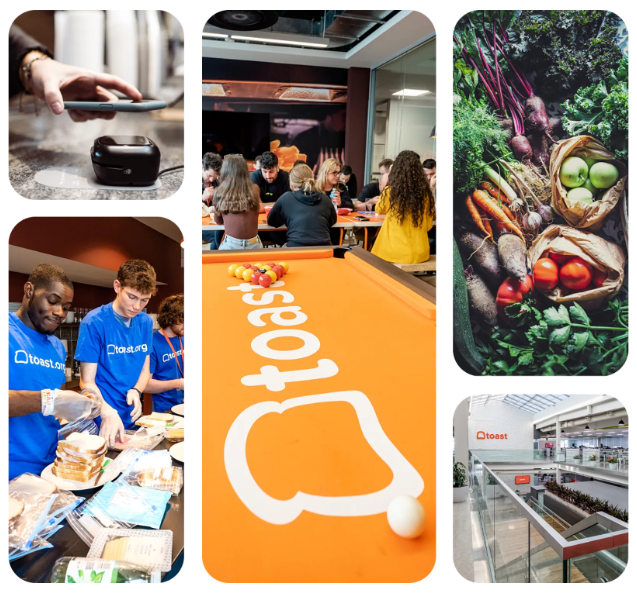
Original article here
Author: Toast
Our purpose at Toast is to enrich the food experience for all. We bake sustainability, social impact, and equity into our business strategy, operations, and products. The ultimate goal? To help our employees, our industry, our communities, and our environment to thrive.
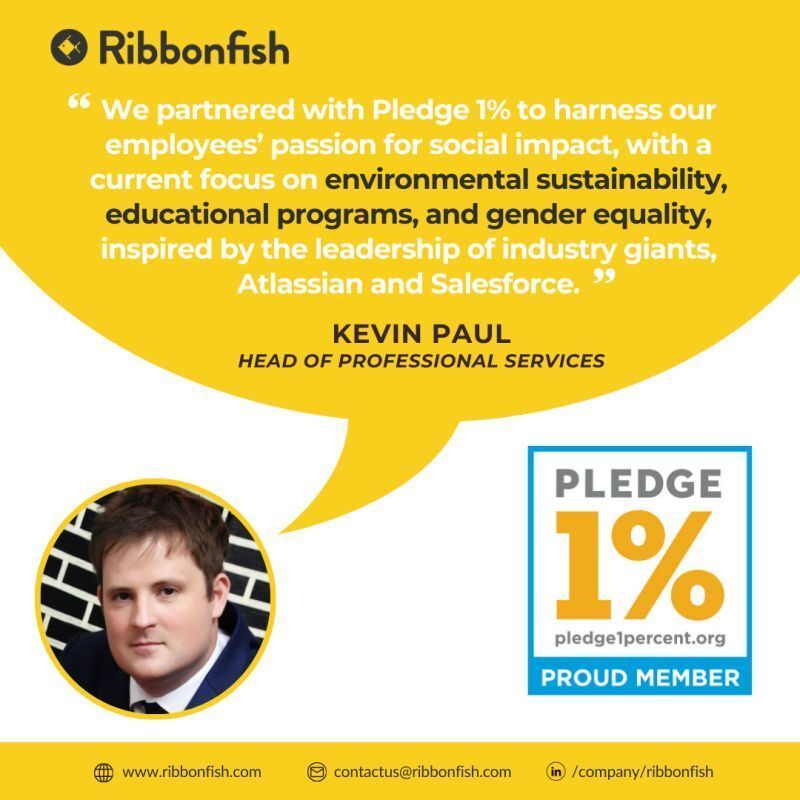
Original article here
Author: Niña Cabrera
We are now a proud member of Pledge 1%, a global movement dedicated to reshaping the role of companies in society. This initiative of Pledge 1%, aims to establish a new standard for corporate social responsibility, regardless of a company’s size or stage. We’re part of this movement with 18,000+ companies across 120 countries, allocating 1% of our product, profit, and more to charitable causes.
Our decision to take part in this initiative is driven by several reasons:
Enhancing Brand Reputation
As part of our social responsibility, we uphold our core values of integrity and community support. By increasing our efforts to give back to society, we strengthen our brand identity as a company that prioritizes making a meaningful difference in the world. Through active participation in philanthropic activities and support for charitable causes, we not only enhance our brand reputation but also inspire others to join us in our mission of creating positive social impact.
Driving Innovation
Engaging in a partnership with Pledge 1% fosters a culture of innovation. It encourages our teams to think creatively about how our products and services can address social challenges, leading to new opportunities for growth and impact. We believe that by aligning our goals with meaningful social impact initiatives, we can drive innovation and create lasting positive change.
Fostering Employee Satisfaction
We understand that employees are more likely to feel proud and motivated to work for a company that prioritizes social responsibility. Investing in this aspect can significantly boost employee engagement, satisfaction, and retention.
Our Head of Professional Services, Kevin Paul, said, “We partnered with Pledge 1% to harness our employees’ passion for social impact, with a current focus on environmental sustainability, educational programs, and gender equality, inspired by the leadership of industry giants, Atlassian and Salesforce.” This just means that our partnership with Pledge 1% reflects our commitment to corporate social responsibility.
Our Previous Initiatives
Our recent inclusion in Pledge 1% strengthens our dedication to social responsibility through our previous initiatives. Firstly, the Dive into Tech: The Ribbonfish Innovation Challenge, where the top five finalists developed innovative applications using Salesforce. The three winners received cash prizes for their innovative solutions and an opportunity to work with us through a contract. Additionally, we sponsored Women of the World (WOW) Soiree in Manila. It is a program and community that empowers women to make a meaningful impact in their careers and lives. This coming June, we’ll also sponsor a Soirée in London. Lastly, we donate to charities such as WWF, Marie Curie, Clic Sargent, and NSPCC. These contributions helps important causes like environmental conservation, cancer care, and child protection. Overall, with our initiatives, it reflects our dedication to creating a positive and lasting impact on society.
Joining Pledge 1% not only benefits us but also contributes to positive change worldwide. As we progress, we invite you to support and join us on this journey toward making a difference. Let’s create a meaningful impact in shaping a better tomorrow. Together, we can create a brighter future for all. Stay updated with us for more insights into our initiatives!

Original article here
Author: Evolving-Consulting
Waverly Robotics, a multi-tier robotics program serving Waverly Community Schools in Lansing, MI, has seen remarkable growth since its inception in late 2017. Originally starting with a single high school competition team, Waverly Robotics has expanded to over 20 teams across all grade levels, involving more than 250 active students. The program is dedicated to fostering a love for STEM (Science, Technology, Engineering, and Mathematics) in the community, offering students hands-on learning opportunities and competitive experiences.
THE CHALLANGE
Efficiently Tracking Donations: With an increasing number of donors, Waverly Robotics sought to streamline and enhance their ability to track contributions and donor interactions.
Support Staff Optimization: Managing leads and sending mass emails efficiently became a focus, as the organization looked to ensure timely and targeted communications with current and prospective donors.
THE SOLUTION
To capitalize on these opportunities, Waverly Robotics implemented a comprehensive donor management system with the following features:
Centralized Donor Database: All donor information, including contact details, donation history, and engagement preferences, was consolidated into a single, centralized database. This system allowed for more streamlined tracking and management of donor interactions.
Segmentation and Targeting: Donors were segmented based on donation levels and frequency. This segmentation enabled Waverly Robotics to tailor their communication strategies, ensuring that each donor received relevant and personalized messages.
Email Campaigns: The new system facilitated the creation and distribution of targeted email campaigns. These campaigns were designed to engage active donors, re-engage former donors, and attract prospective donors, enhancing overall donor engagement.
Email Campaign Approval Process: An approval process for email campaigns was established to ensure consistency, accuracy, and professionalism in all communications. This process involved review and authorization from key stakeholders before emails were sent out.
Dashboards: Customizable dashboards were created to visualize key metrics and track performance. These dashboards provided real-time insights into donation trends, campaign effectiveness, and overall donor engagement.
Reports: Detailed reports on donations, volunteer activities, and program outcomes were generated. These reports offered valuable insights for strategic planning and demonstrated the impact of donor contributions on the program’s success.
The implementation of the new donor management system enhanced Waverly Robotics’ ability to engage with their donor base effectively. The centralized database and targeted email campaigns led to a more organized and efficient approach to donor relations. The dashboards and detailed reports provided actionable insights, enabling the team to make informed decisions and optimize their fundraising efforts.
Through the successful implementation of these solutions, Waverly Robotics continues to thrive, inspiring the next generation of innovators and leaders in STEM.
“Evolving Consulting exceeded our expectations with their Salesforce consulting services. The solutions provided were innovative, efficiently implemented, and greatly enhanced our operational efficiency. The collaboration was seamless, and the results spoke for themselves. We highly recommend Evolving Consulting for Salesforce services.”

Original article here
Author: Remitly
At Remitly, we are committed to making transactions more affordable, accessible, and relevant through digital innovation—because when individuals have access to trusted, inclusive financial services, they change their future and uplift their loved ones and communities.
This is why our Global Impact work focuses on creating trusted, inclusive products while delivering on our responsibility to protect people, operations, and the planet for the long-term through sustainable business practices. In the spaces our product cannot yet serve, we seek to extend this commitment through global philanthropy.
While we’re proud of the impact we’ve had to date, as we look ahead, we’re excited to make progress towards our Global Impact priorities and share more with you about those. We also recognize that we’re just getting started and invite you to join us on this exciting journey.
– Mallory Boulter, VP Global Impact
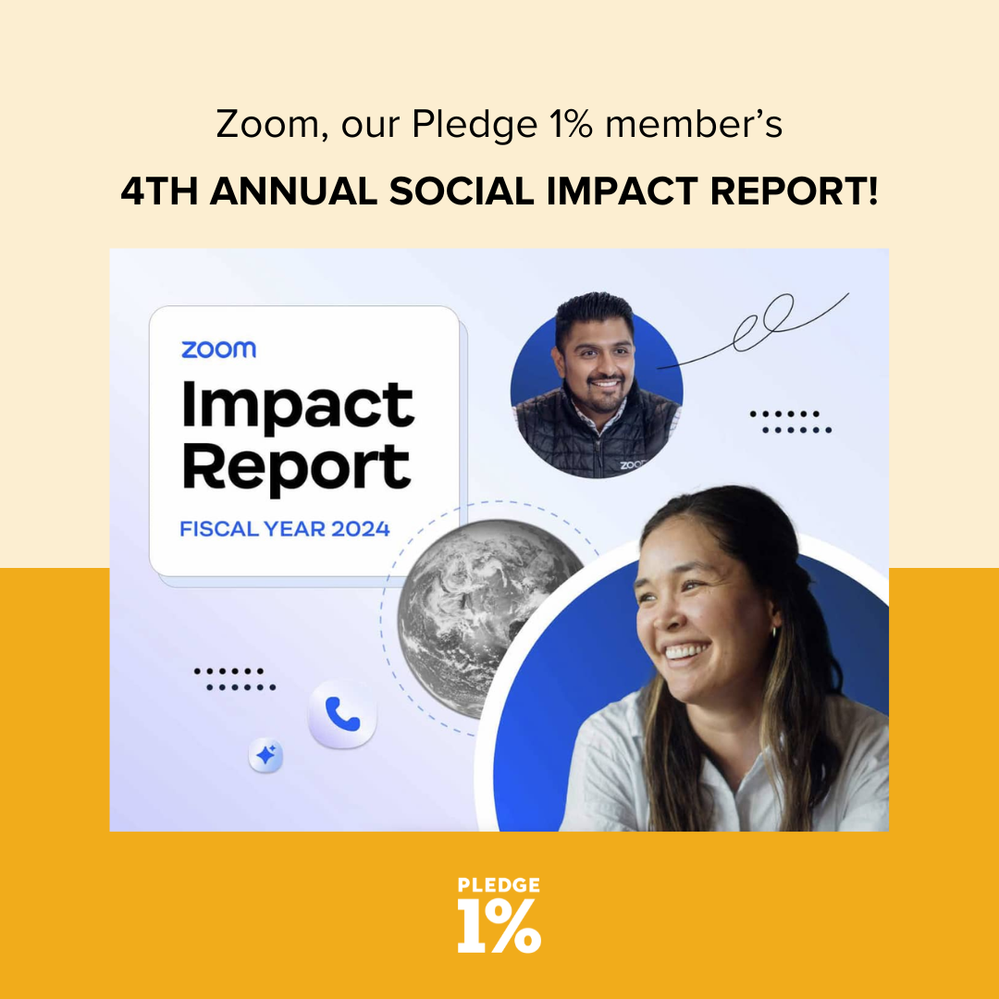
Original article here
Author: Zoom
This year’s Impact Report brings together our company strategy, sustainability, social impact, and diversity, equity and inclusion efforts into a single report for Zoom’s fiscal year 2024.